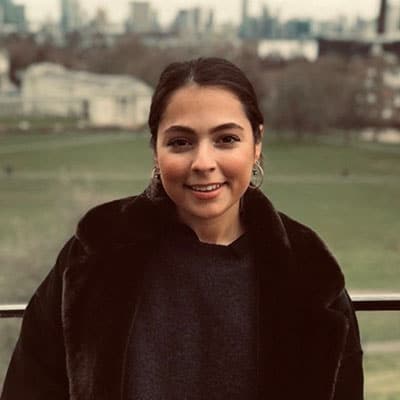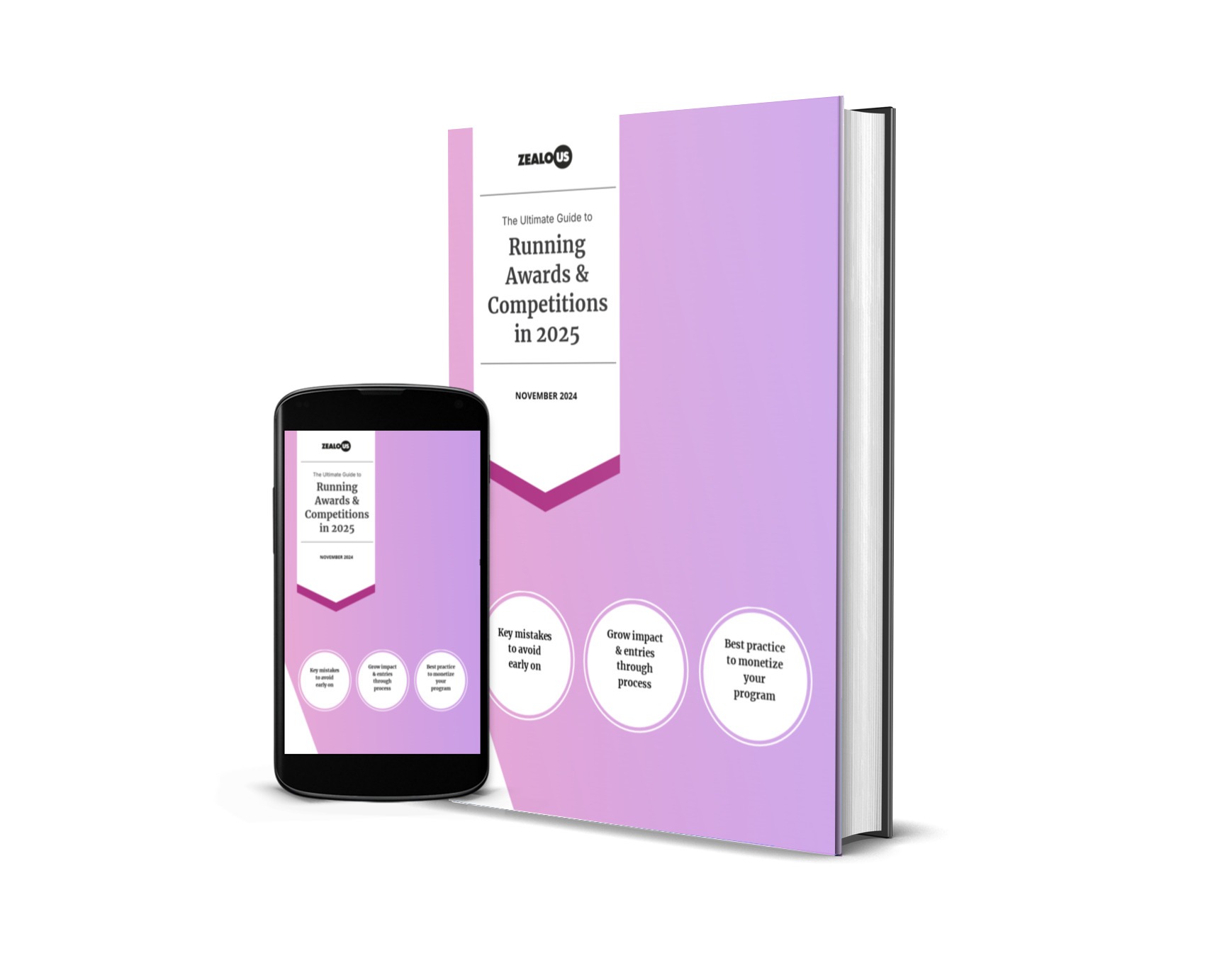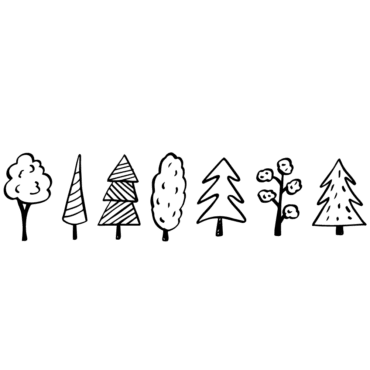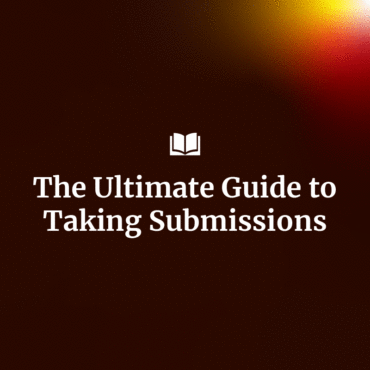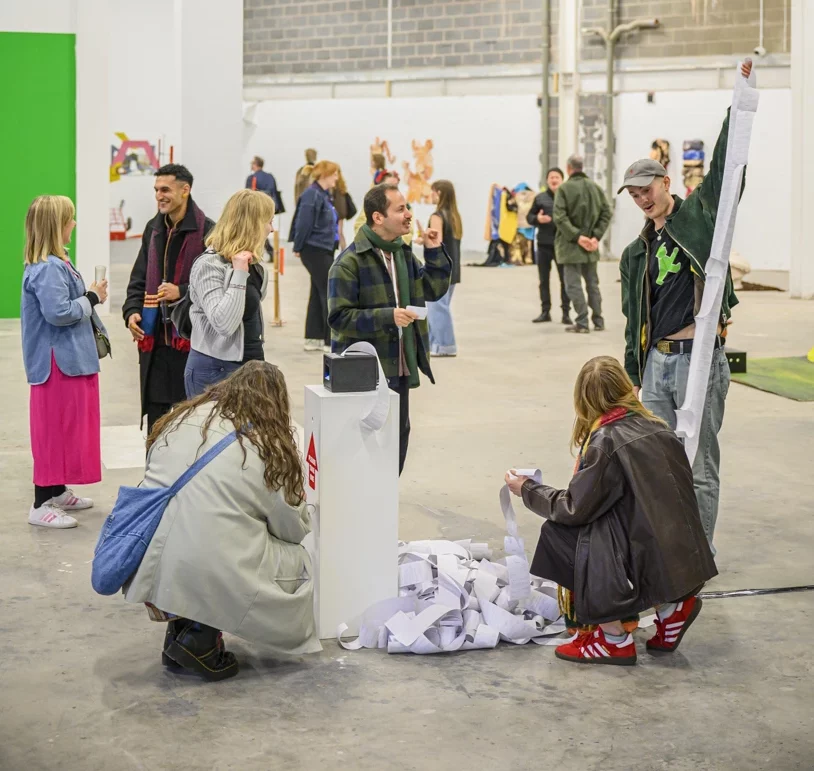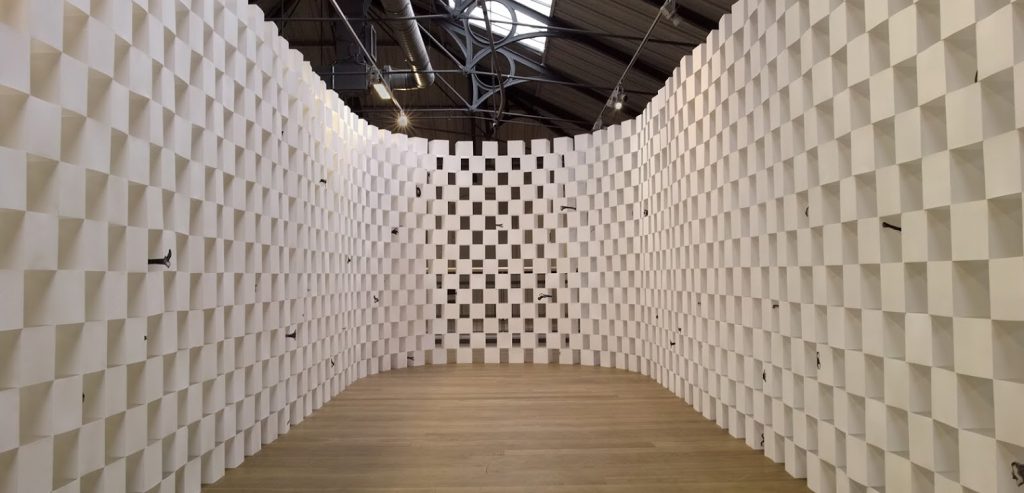
Congratulations on winning Zealous Stories: Print! Could you tell us a little more about the printing process used in Signs?
Thank you for selecting Signs! I often use etching in my work, mostly combined with installation. Although silkscreen, photography and drawing are important too – it really depends which technique lends itself best to the ideas and concepts behind a piece. With Signs, it was important that the images were not just ‘sitting’ on the cubes, but instead became part of the ‘papers’ materiality. I chose to use etching because it allowed for the plates to be deeply etched, so that the indentations on the paper show clearly.
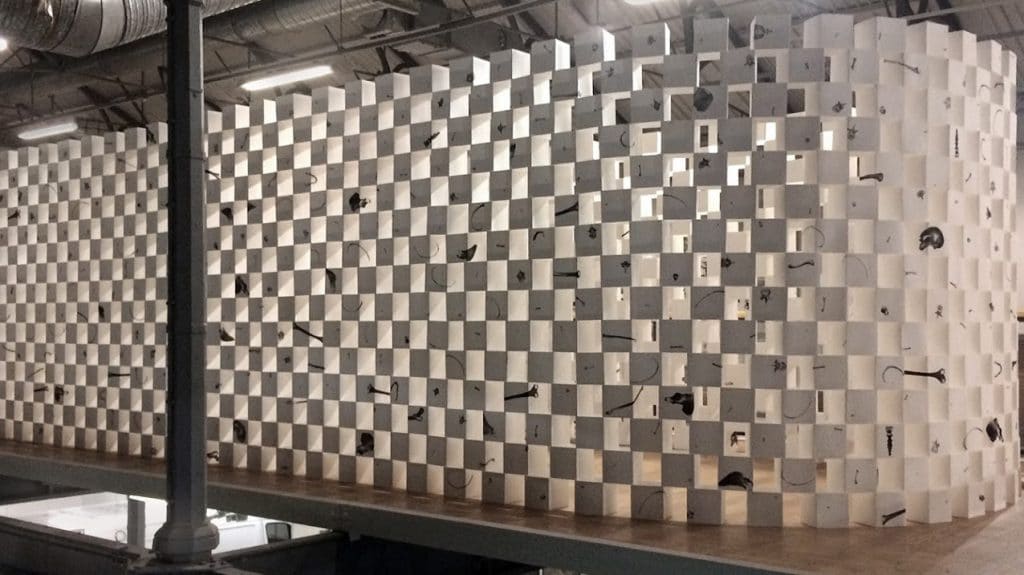
Your installation consists of over 1,200 paper cubes, each printed with an etching and stacked on top of one another. The project must have been a time-consuming process! What preparations go into an installation of this size?
It was a challenge, especially as there was a short deadline for realising the piece. I started with calculating how much paper I’d need to produce the cubes, including a 10% failure rate. Additionally, I ordered packets of grey boards, tissue paper and newsprint. Once the paper had arrived and I was printing away, I needed a lot of space to dry the etchings – luckily, Thames Side Print Studios were very helpful! I was allowed to occupy one side of the etching studio to accommodate the many stacks of printed drying paper strips.
For the folding and glueing, I had friends and studio assistants helping me, they were brilliant and created a mini production line to help to make it all happen!
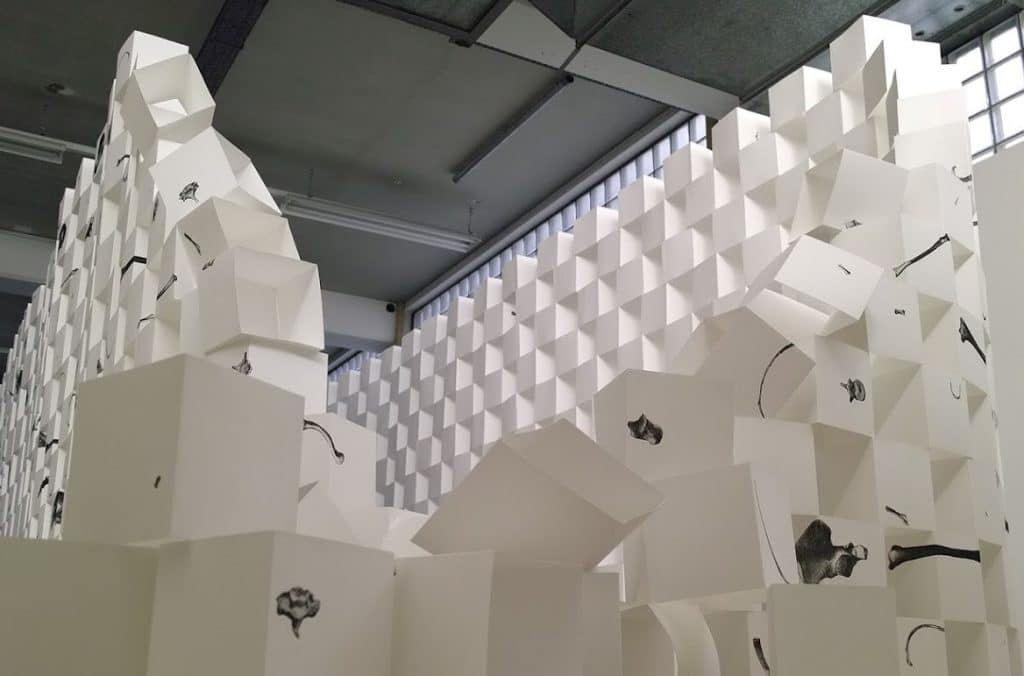
One end of the sculptural wall is collapsed to give a new perspective; can you explain the concept behind this?
The architectural oval shaped installation needed to be broken up – without this, it would have been an imposing wall, too much like a building, too perfect in shape. As you walk along the installation, your expectations are confounded – you are confronted with the elements in disarray, then you can look more closely at each element and can see inside the structure.
Your work is an attempt to visually abstract human bones and remove their mystique. What is it about the skeleton that is so fascinating to you?
The human skeleton is our most physical basic structure. Bones are essential in reconstructing who we are and where we come from. I am interested in the space we as human beings occupy on this planet; our impact on and synergy with it.
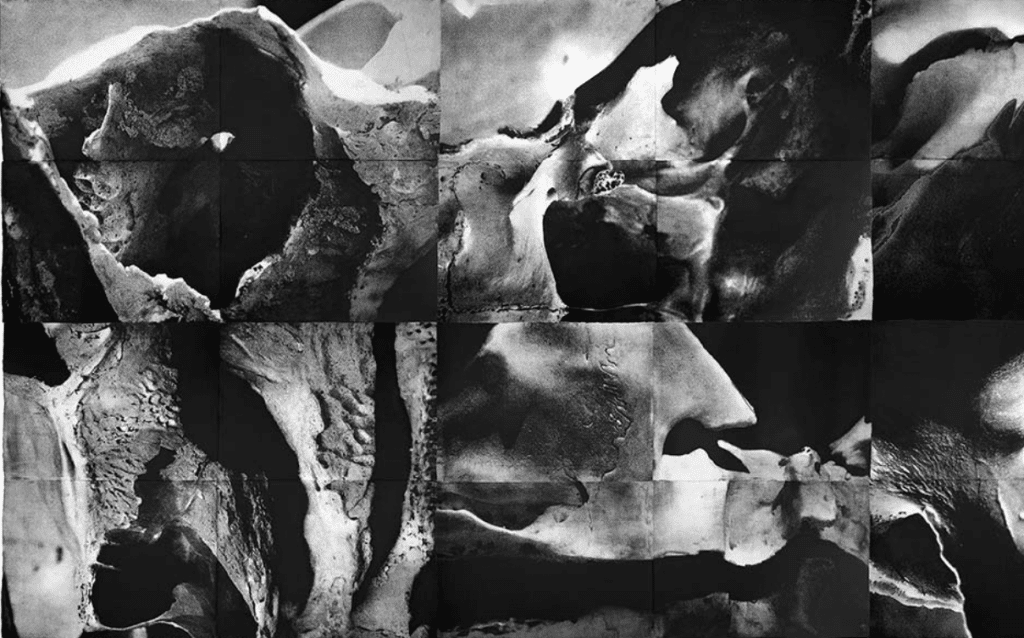
Through the process of dismantling and reconstructing, you create new formations. In this way, is the act of dismantling a work of this nature just as an important as the installation itself?
Yes, one could say that with this piece as it unfolds from 2-D elements into a large 3-D installation and then condenses back into a couple of cardboard boxes filled with flat elements. The installation and therefore its reading will always be different, in concept and the installation is totally site specific.
From your other bodies of work, is there a project that has been impactful in moulding your practice and way of thinking?
An important piece for me is Urlandschaft (primordial landscape). It is a large 24 part steel etching, 516cm x 256cm of images of the inside of the human skull. Standing in front of it you are in the space that your brain occupies, you are looking at the site where your consciousness supposedly originates.

As a printmaker, what have been the typical day-to-day frustrations that you have had to overcome?
The preconceptions of what printmaking is and can be. I get quite frustrated when all use of printmaking is thrown into a dusty, craft or commercial drawer!
Do you have any advice for aspiring printmakers?
Learn about the techniques and processes – but don’t let them decide what you really want to say and feel free in how and what combination with other disciplines you apply them! Love your mistakes – treat printmaking like mark making and let yourself be surprised.
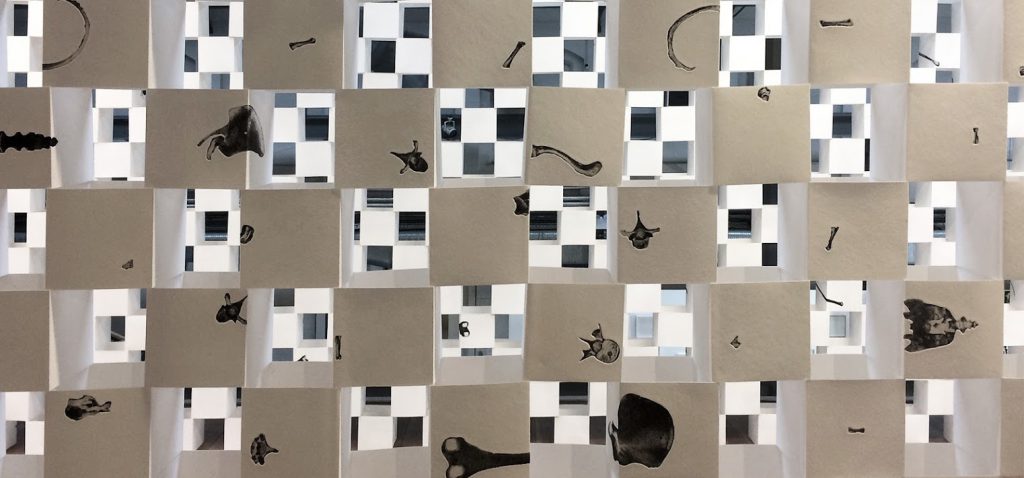
Carol’s work, Signs, was selected by industry guest judges from Woolwich Contemporary Print Fair, Beecroft Art Gallery, Culture Warrington and Manchester Print Fair.
Carol also won a voucher from Intaglio Printmaker and a subscription to Elephant Magazine.
Website / Follow Carol on Instagram
Let us know you want us to write more content like this with a love!
Share
